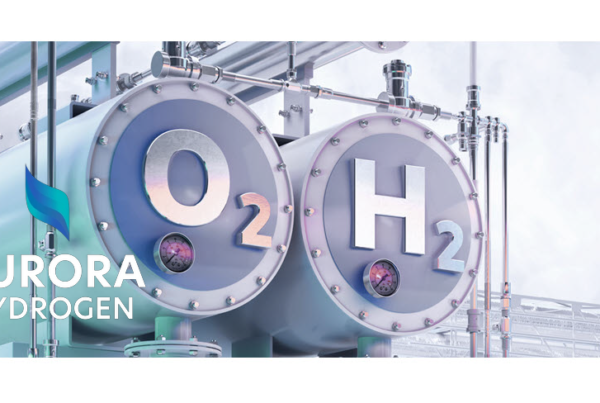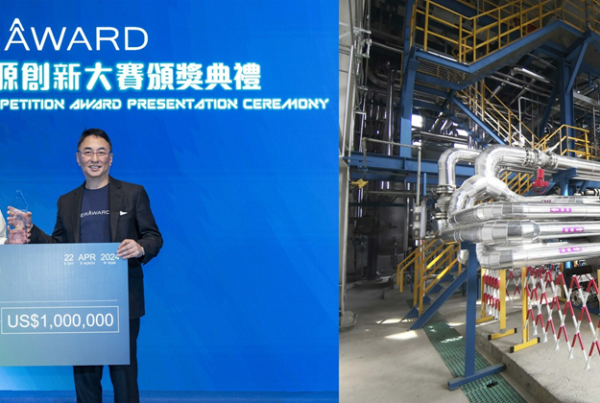
Speaking to Kamal Bali, the President and CEO of Volvo India, we get insights into how hydrogen can be used as a clean fuel source in commercial and long haul vehicles and how Volvo can work towards achieving this in India.
Commercial vehicles moving away from burning fossil fuels is a key step in achieving cleaner air. Since long haul vehicles need range, equipping them with batteries would make them too heavy. To overcome this, we need to look at alternate fuel options that can still use the internal combustion engine, but without causing pollution. The answer to this is Hydrogen power.
To understand the use of hydrogen better, Express Mobility speaks to Kamal Bali, the President and MD of Volvo Group India, to know more about how hydrogen can be used as a fuel, and about the joint venture between Volvo Group and Daimler Truck AG.
How are hydrogen-powered vehicles different compared to Battery electric vehicles (BEVs)?
At the outset, it is good to mention that we do not envisage one single solution to tackle the climate and energy challenge in the future. Both Hydrogen & Electric vehicles along with other options will complement each other. Batteries are an ideal solution for shorter/medium-range applications, but for heavy-duty and long-haul transport – the size required to deliver sufficient driving range would make the vehicle too heavy and unwieldy. This is where hydrogen fuel cells come in. There will still be applications where we need combustion engines, albeit ones that run on fossil free fuels. This is a three-pronged approach we envisage to decarbonizing transport.
Hydrogen can be used to fuel an internal combustion engine, which is similar to a Compressed Natural Gas (CNG) engine. Another solution is to use hydrogen in a fuel cell where it generates electricity to power the vehicle. Hydrogen can also be used as an auxiliary fuel cell to extend range on a battery-powered electric vehicle. A fuel cell vehicle works a bit like an internal-combustion engine except that the system doesn’t burn the hydrogen that it draws from a pressurized tank but fuses it with oxygen to produce electricity to power an electric motor.
When hydrogen is used to power a fuel cell, the only by-products are water and heat—no pollutants or greenhouse gases. Depending on how the hydrogen is produced it can be an extremely clean alternative to diesel. Hydrogen also packs a punch: 80 kg of hydrogen can deliver enough energy for a truck to cover 800 km! The fuelling process for hydrogen vehicles is also quick and easy.
The propulsion in hydrogen fuel cell vehicles is electric. This means the driving experience feels similar to driving an electric truck; no engine noise, a fast start and the possibility to recover braking energy.
From a cost perspective, both hydrogen fuel cells and lithium-ion batteries are both more expensive than diesel. The cost of lithium-ion batteries however is coming down quickly. Bloomberg predicts that the crossover point — when electric vehicles become cheaper than their combustion engine equivalents — could be as soon as 2022. Because the development and roll-out of hydrogen vehicles has been limited it is difficult to measure similar gains for now.
When it comes to range, Hydrogen fuel cells have greater energy density than batteries, and therefore provide greater range to a vehicle. In fact, the energy to weight ratio of a 700-bar hydrogen tank is ten times higher than a battery. Hydrogen fuel cells are also lighter than batteries, which means that hydrogen vehicles can manage a higher payload.
What sort of infrastructure is needed to transition into hydrogen power, and is India ready?
Every new option involves large investment into energy production, infrastructure, product development as well as manufacturing. The direction & roadmap in this regard is key. This is key for industry players to judge the market demand and develop a business case for the investments required.
Hydrogen is reactive, so it tends to erode other materials and it’s also flammable – factors that make it difficult and costly to transport. Another major challenge is the lack of and high cost of building hydrogen infrastructure. So, we have to tackle these areas. Today there are only 337 hydrogen fuelling stations around the world, most of it in Germany and Japan. Although it’s been shown that existing CNG infrastructure can be used to transport and store hydrogen, this is not a good solution for fuel cells which must run on very clean hydrogen.
India is not ready right away. And that is where India’s Hydrogen Energy Mission is setting the direction to make India ready. The mission will support several projects and collaborations to make green hydrogen viable – covering research, collaborations, infrastructure, production & distribution of hydrogen.
How can the Indian automotive sector help fight climate change?
Automotive sector is a key player in this fight, and it has to join hands with all other stakeholders in fighting climate change. No one stakeholder can achieve the same and thus the challenge has to be approached as a shared vision.
The auto sector has the opportunity to intervene across a range of areas to ensure a carbon neutral future. It is not merely about alternate fuels but the entire approach to sustainability. For instance, if we think of only electromobility in cities but do nothing about public transport, we will be congesting the city with electric tomorrow instead of diesel today and that is not sustainable. The areas of interventions are many, for example:
- Carbon Neutral Production & supply chain
- The Product – Efficiency, performance, fuel, emissions, Lighter materials
- The transport Concept: Road Trains, BRT system, Hub & Spoke System, Making Public Transport more attractive, the right power to weight ratio for vehicles
- Transport Management: Fleet optimisation, Cargo optimisation, Logistics efficiencies, loading & unloading systems, Driver Management
- Traffic Management: Telematics, Vehicle to Vehicle communication, Vehicle to infrastructure [ex. Traffic lights] systems, Critical response systems, Site optimisation systems
- Emerging Technologies & Fuels: Automated driving, Connected solutions, Electric Vehicles, Hydrogen fuel cells, LNG and others.
For a country like India, which is just stepping into BEVs, how long do you think it would take for commercial vehicles (buses, trucks) to accept EVs, be it battery powered or hydrogen-powered?
India is a large domestic market and thus by nature should be able to offer a large customer base and business viability for future technologies. Here it is important that the country acts like one single market to offer the necessary business case. Backing this of course is the need to bring the technologies to age and establish the necessary ecosystem.
As we see 2-wheelers & 3-wheelers are probably the first candidates to pick up pace in the country. Buses in city applications are already being deployed but yet not at a mass level. Trucks for intra-city transportation could be the next focus. However, to consider mass adoption, the infrastructure, technology maturity and business cases need to come together – and then it’s possible to meet the typically stated 2030 targets by authorities. When it comes to Long-haul trucks & buses it may take more time.
Can you tell us more about cellcentric and how can this help India contribute towards cleaner air and climate change?
The new fuel-cell joint venture between Volvo Group & Daimler Truck AG- cellcentric – is a part of an industry-first commitment to accelerate the use of hydrogen-based fuel cells for long-haul trucks and beyond. With the ambition of becoming a leading global manufacturer of fuel-cell systems, cellcentric will build one of Europe’s largest planned series production of fuel-cell systems, with operation planned to commence in 2025.
Designed to help meet the 2050 targets of sustainable transport and a carbon-neutral Europe as part of the European Green Deal, cellcentric will develop, produce and commercialize fuel-cell systems for both long-haul trucking and other applications. Currently, cellcentric is conceptualizing the plans for its large-scale series production. More details and a decision on the location will be revealed over the course of 2022.
The goal is to start with customer tests of fuel-cell trucks in about three years and to be in series production of fuel-cell trucks during the second half of this decade.
Volvo Group has set the ambition to have at least 35% fully electric vehicles sales by 2030. Does this include India, and what percentage is Volvo aiming at for India?
Volvo Group has committed to aligning our emission targets to the 1.5 degree in the Paris Agreement and is taking it further in several areas:
- Volvo Group has developed its own pathway towards the 1.5⁰C target for trucks and buses, with a targeted emissions reduction of 40% per vehicle km by 2030. This target includes 35% fully electric sales by 2030 covering all Volvo vehicles & construction equipment put together. Of this, Volvo Trucks specifically has a target to have 50% trucks as electric by 2030.
- Volvo Group’s targets for indirect emissions covers approximately 95% of the products sold. This is well above SBTi’s minimum requirement of 67%.
- Volvo Group targets to reach net-zero value chain emissions by 2040 at the latest, ten years earlier than the SBTi commitment. Volvo’s products have an average lifetime of ten years in the customer use-phase. For the entire rolling fleet to have net-zero emissions by 2050, it is necessary that all products delivered after 2040 have net-zero emissions.
- The targets are defined by the EU demands, but the scope is that reporting of the targets would include global products and our global operations.
One does anticipate and recognize that some markets will be more aggressive in legislation and technology development to become “net-zero”. This is the case both within the EU – where there are 27 different markets – and outside. Some markets may go Zero-emission before others, but in the end all markets will need to be “zero-emission”.
How can the Indian government help in this transition to hydrogen power and what have other governments done (meaning in Europe, USA, China, or Australia)?
The overall approach is the same for all countries: There needs to be greater cooperation between public and private stakeholders to develop the necessary technology and infrastructure, which calls for united action from policymakers and governments around the world in helping make hydrogen fuel-cell technology a success. This is also what we understand is what India’s Hydrogen Mission seeks to achieve.
With growing concerns about climate change and demands for a ‘green recovery’ from COVID-19, governments are showing greater interest and investment in hydrogen. Earlier, the EU had revealed a €750 billion recovery plan to fund green transport and industries. The plan, which is centred on The European Green Deal, highlights hydrogen as a priority with plans to develop the technology through an investment agenda and free cross-border trade of hydrogen. A European Clean Hydrogen Alliance that brings together investors with governmental, institutional and industrial partners was also announced earlier.
The major truck manufacturers in Europe have called for the setup of around 300 high-performance hydrogen refuelling stations suitable for heavy-duty vehicles by 2025 and of around 1,000 hydrogen refuelling stations no later than 2030 in Europe. This joint initiative, using hydrogen as a carrier of green electricity to power electric trucks in long-haul operations, is one important part of decarbonizing road transport.
As CO2-neutral trucks are currently significantly more expensive than conventional vehicles, a policy framework is needed to ensure demand and affordability coupled with incentives and a taxation system based on carbon & energy content.
Source: The goal is to start tests of fuel-cell trucks in three years – Kamal Bali, Volvo
Read the most up to date Fuel Cell and Hydrogen Industry news at FuelCellsWorks




